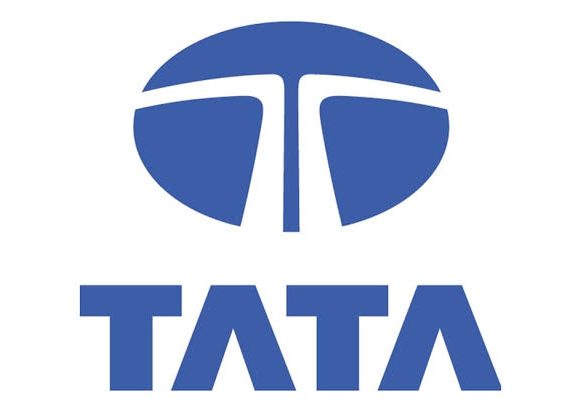Kia Seltos

Kia is to Hyundai what Skoda is to VW. It is the more lifestyle division of a main stream brand. Apart from the R&D and few of the top management, both companies don’t share much. Kia has been testing the waters here for a while. Now, it has a full-fledged manufacturing facility in Andhra Pradesh, and a reasonably well established dealer network. We were among the first to drive the Seltos, its first offering for the Indian market, ahead of its actual launch.
The Seltos’ styling is sure to please everyone. It is roughly the size of a Creta, but is marginally longer. In fact, the Seltos is based on the next gen Creta that will hit the Indian markets later this year. It looks very upmarket from the front with LED headlamps and fog lamps whose elements resemble ice cubes. The traditional Kia grill is well finished with a knurled finish, and has DRLs extending on to it. The bonnet has a squared off edge giving it a purposeful look. The 17 inch wheels in both the GT Line and Tech Line models fill the arches well. The GT Line has red accents on the alloys along with those in the airdam, sides and rear. The side profile has an upward swept quarter glass, while the rear is quite conventional in design and layout.

The interiors are well made too. The dashboard has a pleasing design and overall quality is excellent. Plastics have a nice texture to them, and there is a faux leather trim on the dashboard. The buttons have a quality feel to them, the knobs have a knurled finish, and even the speaker grills are designed to look expensive. The dashboard has a Merc look to it with the infotainment screen and gauges being part of one big rectangular console. The 10.25 inch touchscreen offers Apple Car Play, Android Auto, Navigation, voice control, along with various features including a concierge service. You can press a button for a location query and an actual person will answer to whom you can then request to patch the route map to your navigation system. You get wireless charging, tyre pressure monitoring, a 400W Bose system, ambient lighting etc. The lower trims feature a standard Arkamys sound system; we didn’t feel the Bose system was that superior. The steering wheel is great to hold, and everything has a well put together feel. What’s also impressive is the driver MID is another 7 inch screen with crisp graphics and cool animations, supplementing two analogue gauges. The GT Line cars get another display in the form of a heads-up on a small retractable screen which shows maps, speed and other important info. Apparently, like with Hyundais, you can’t have the fully loaded variant if you choose an automatic. Kia should have known better.
I usually prefer black interiors in a car, but in the Seltos, the Tech Line interiors seemed more appealing than the GT Line. Perhaps, it had to do with the stitched pattern of the seats with matching carpets or that the automatic version of the GT we tested, was missing out on the ventilated seats and sunroof. The front seats are comfortable, and the driver side gets electric adjustment. The rear seat is reclinable by 6 degrees, gets sun blinds for the sides and is a comfortable place to be. Headroom and legroom though not in the league of the larger SUVs like the Hector, are still good. You wish it offered a bit more thigh support at the rear. Still, the shoulder line is lower than in the Creta, giving you better view, and the extra quarter glass at the rear makes the cabin feel airier. You get the same air quality index display above the rear air vents and a charging socket for your mobile phone.

You get a choice of three engines with the Seltos – a 1.5L petrol, a 1.4L turbo petrol or a 1.5L diesel. All three engines come with a 6 speed manual or its own type of automatic transmission option. The basic 1.5L engine gets a CVT, while the diesel gets a 6 speed conventional torque convertor while the top spec 1.4L turbo petrol gets a 7 speed Dual Clutch. We haven’t driven the base naturally aspirated model yet.
The 1.5L turbo diesel is soon going to be the mainstay engine in the Kia and Hyundai range, and is a brilliant performer. It makes 115bhp and 250Nm – slightly down on power and torque compared to the Creta’s 1.6L with 128bhp and 260Nm. But, on the road, it feels just as good with a much linear nature making up for the sudden bump in the power. Performance is adequate, and power stays strong till about 4600rpm. The gearbox is smooth and the clutch is easy to operate.
If you are buying the diesel automatic, you’d be surprised to know that the driving experience is much better than in the Hyundai Creta diesel AT. The same six speed gearbox in the Creta used to get confused with full throttle inputs, wrongly selecting second gear where it would often rev the engine out of its powerband before selecting the third gear and accelerating. In the Seltos, the gearbox shift logic has been improved to select the right gear, and the wider powerband means there is always ample pulling power after each downshift.

Just as impressive as the diesel is, 1.4L turbo petrol is the engine to have right now. Essentially, a 4 cylinder version of the one in the Venue, this direct injection motor with its healthy 140bhp and 242Nm torque is very refined, eager to rev and enjoyable. The dual clutch gearbox doesn’t feel as lightning fast as it does in a VAG car, but does its job brilliantly. It can upshift closer to the red line and even lets you do manual downshifts at reasonably high revs giving you better control over the car. Still, like in the Venue, the DCT gearbox is tuned conservatively to extend its clutch life with gentler shifts. There is even a mode in the driver’s MID to monitor the temp of the transmission.
Dynamically, the Seltos also happens to be one of the best SUVs to come from the Korean shores. The ride quality is brilliant, and the Seltos soaks all broken patches of roads with aplomb. The suspension has an adequate amount of travel and doesn’t feel as willowy as in the Creta. Despite the focus on comfort, it somehow manages to grip well too. On the wet roads of Goa, the Kia felt planted and although the steering isn’t the most feel-some around, still feels direct. The brakes which are discs at the rear, manage to stop well too. The GT Line car offers three driving modes (Eco, Comfort, Sport) and traction settings (Mud, Snow, Wet/Sand). While Sport makes the steering stiffer and the throttle a bit more responsive, the traction settings made no noticeable difference to the driving.
Kia’s maiden product for India seems to have got everything right. It has got the style, appeal, space, comfort, and is just the right size. It also drives well and there is an engine option for everyone. And, Kia offers one of the best warranties in its class, on top of the excellent reliability we have come to expect of new Hyundai products. With entry level model starting from Rs.9.46 lakhs, they even got the pricing right. If we could find a fault with it, it is that the choice of engines, transmission and variants can give you a hard time at the dealership.
Pic Courtesy: google/ images are subject to copyright








